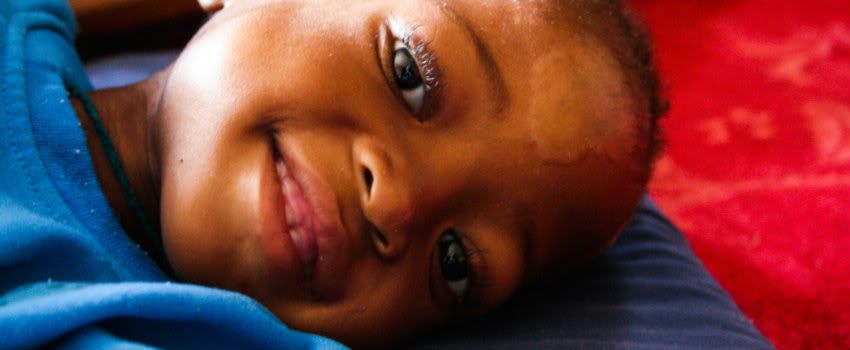Today the three medical students (Theresa, Kelly, and I) spent a day with one of the outreach teams visiting 5 different clients in a village about 30-45 minutes away by car. It was a great opportunity to see how outreach works, and I look forward to more trips with them in the future.
On this trip, we stopped in different houses to bring food, weigh and measure kids, and count their ARV pills (HIV meds) to see if the children had received the appropriate amount. We saw quite an array of home settings on all of these visits. Everyone lived in the traditional round huts you see in Lesotho, but what we found inside each home was totally different. One house had nothing but a stove on the mud floor, a couple blankets stacked against a wall, and trash outside. This mother had 4 kids with 1 on the way, no husband, no job, and no food. The house and family were tragic to see; we wished there was more we could do for them. Conversely, the nicest house had a double bed, a small wardrobe, a table, an electric stove, pots and pans, and a solar panel hooked up to the house. The children at this house were fully dressed (compared to the previous house where the children had no pants), and the mother was upbeat and active in her children's healthcare.
All but one of these families had multiple children, but we were caring for only one of their kids who was malnourished (usually the youngest). I witnessed first-hand the huge difference that the home environment can make in a child's health outcome. The one mom with 4 kids seemed very depressed, and it was echoed in her kids' demeanors. Another child we met had lived at our safe-home when TTL first found him, and he had a strong relationship with his father, was interactive with all of us, and was back on target for developmental milestones.
The WHO guidelines on malnourishment point out that malnourished children are developmentally delayed (crawl, walk, talk later than other children their age), and a crucial part of their treatment should be regular stimulation and encouragement of activity and interaction. I think the TTL safe-house is great for that: the kids have a consistent schedule every day with plenty of food, and there are many staff members and volunteers here to play with them all day. In comparison, most of the people living in the villages are farmers, so they are away all day, and kids are left at home if they aren't in school. If children are very young they are slung on their parents back all day, which doesn't encourage meeting physical milestones like sitting, crawling, walking, etc. I think in severe cases of malnourishment that the safe-home is a great place to nurse a young child back to health. I'm excited to be a small part of that process in the month that I'm here!
****Rachel Hope is a 4th Year Georgetown Medical Student volunteering at TTL during February*******








.jpg)
.jpg)